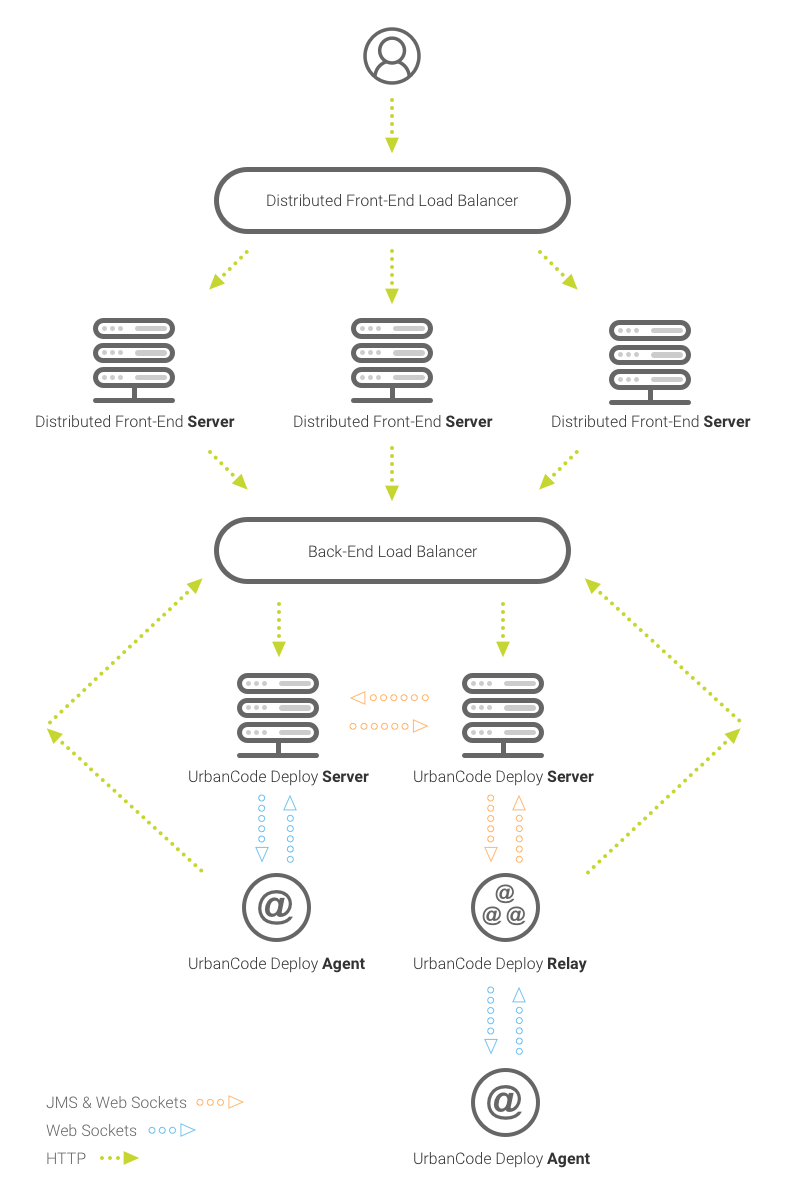Installing the distributed front end server#
Starting in UrbanCode 7.0.3, you can install a distributed front end server. The front end server supports high availability and fault tolerance to ensure success of your application delivery process.
You must have a standard UrbanCode Deploy server installed.
The below image is the recommended approach for managing large volumes of traffic coming through your instances. End-user HTTP traffic can be routed through a load balancer, that can then be handed out to the Distributed Front End Servers. If the front end server cannot directly service the request, it will make a request to the backend load balancer to handle. The URL the front end server will proxy to is based on the Agent External URL configured on System Settings page.

A front end server will not participate in agent communication, workflows, emails, notification services, or cleanup. When connected to a front end server you can still do everything that you would be able to do on a normal UrbanCode Deploy server. Requests for services that are not available on a front end server will proxy a request to the backend.
- Specify the -frontend flag when running the installer. Add Run the installation file with the command install-server.bat on Windows or the command ./install-server.sh on Linux.
Note: The front end server must have the same shared filesystem as the High-Availability setup.
For more information, see Setting up clusters of servers.
Parent topic: Installing the server